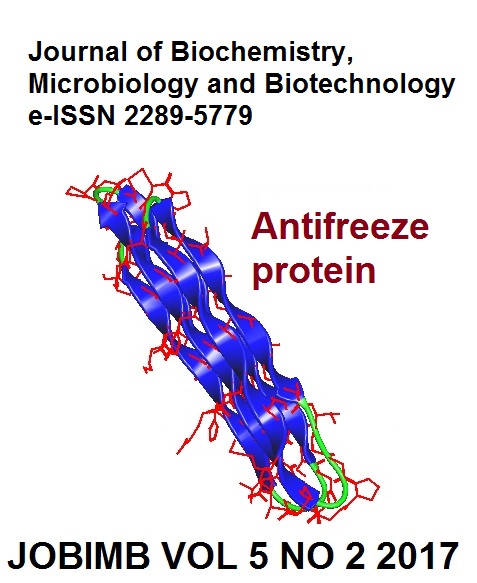Characterization of COOH-Fe<sub>3</sub>O<sub>4</sub>/NCC-CTA<sup>+</sup> on screen printed carbon electrode using Field Emission Scanning Electron Microscope and Energy Dispersive X-Ray for DNA biosensor
DOI:
https://doi.org/10.54987/jobimb.v5i2.343Keywords:
biosensor; DNA; nanocomposite; nanocellulose crystalline; screen printed carbon electrodeAbstract
A novel DNA biosensing platform was designed by the functionalization of iron oxide (Fe3O4)
with the carboxylic group via capping agent, mercaptopropionic acid (MPA) and conjugated
with nanocellulose crystalline (NCC) surface modified with surfactant cetyltrimethylammonium
bromide (CTAB) to assist in the DNA sensing capability. The product of nanocomposites
compound was drop-casted on screen printed carbon electrode (SPCE). Characterization by field
emission scanning electron microscope (FESEM) and energy dispersive X-Ray (EDX)
spectroscopy showing that carboxyl functionalized iron oxide (COOH-Fe3O4) can be hybridized
with NCC-CTA+ via electrostatic interaction.
Downloads
Published
31.12.2017
How to Cite
Che-Engku-Chik, C. E. N., Yusof, N. A., Abdullah, J., Othman, S. S., & Wasoh, H. (2017). Characterization of COOH-Fe<sub>3</sub>O<sub>4</sub>/NCC-CTA<sup>+</sup> on screen printed carbon electrode using Field Emission Scanning Electron Microscope and Energy Dispersive X-Ray for DNA biosensor. Journal of Biochemistry, Microbiology and Biotechnology, 5(2), 19–21. https://doi.org/10.54987/jobimb.v5i2.343
Issue
Section
Articles
License
Authors who publish with this journal agree to the following terms:
- Authors retain copyright and grant the journal right of first publication with the work simultaneously licensed under a Creative Commons Attribution License (http://creativecommons.org/licenses/by/4.0) that allows others to share the work with an acknowledgement of the work's authorship and initial publication in this journal.
- Authors are able to enter into separate, additional contractual arrangements for the non-exclusive distribution of the journal's published version of the work (e.g., post it to an institutional repository or publish it in a book), with an acknowledgement of its initial publication in this journal.
- Authors are permitted and encouraged to post their work online (e.g., in institutional repositories or on their website) prior to and during the submission process, as it can lead to productive exchanges, as well as earlier and greater citation of published work (See The Effect of Open Access).



